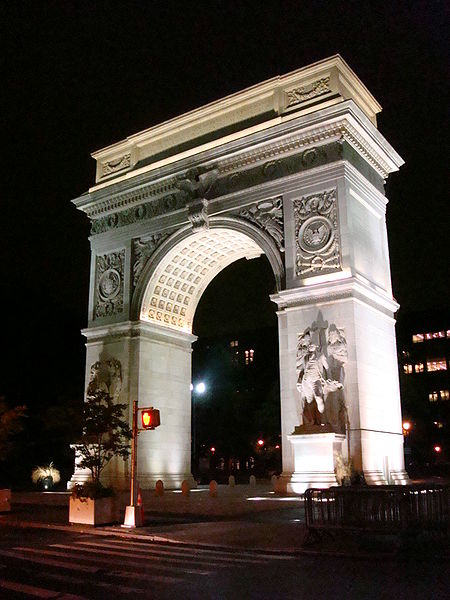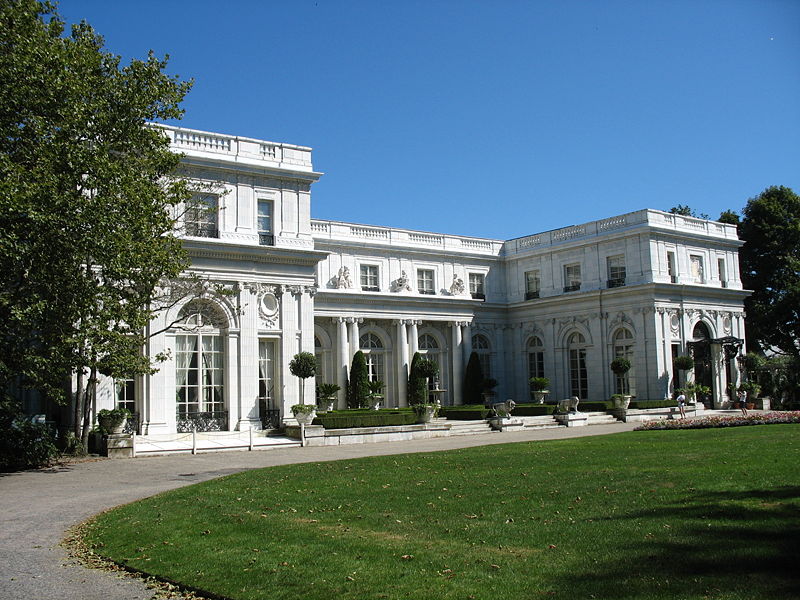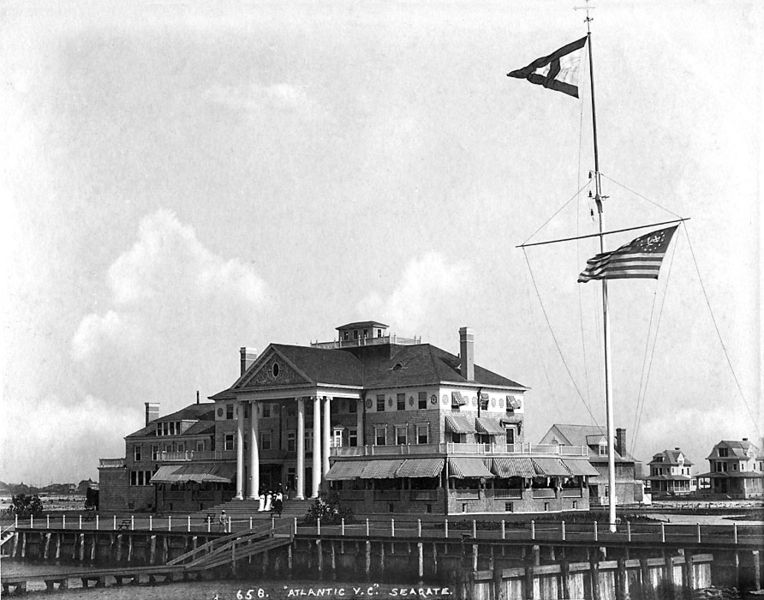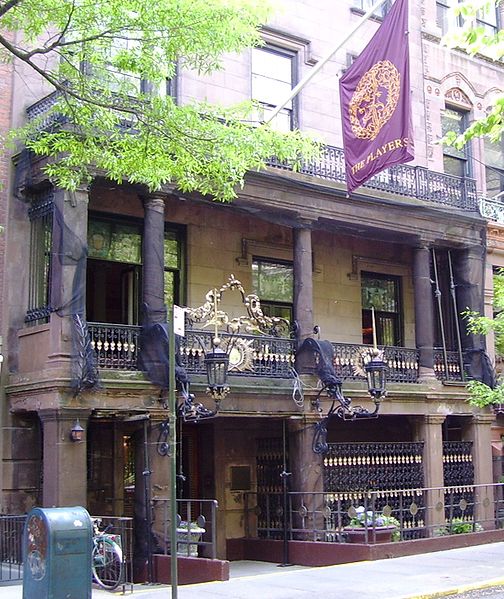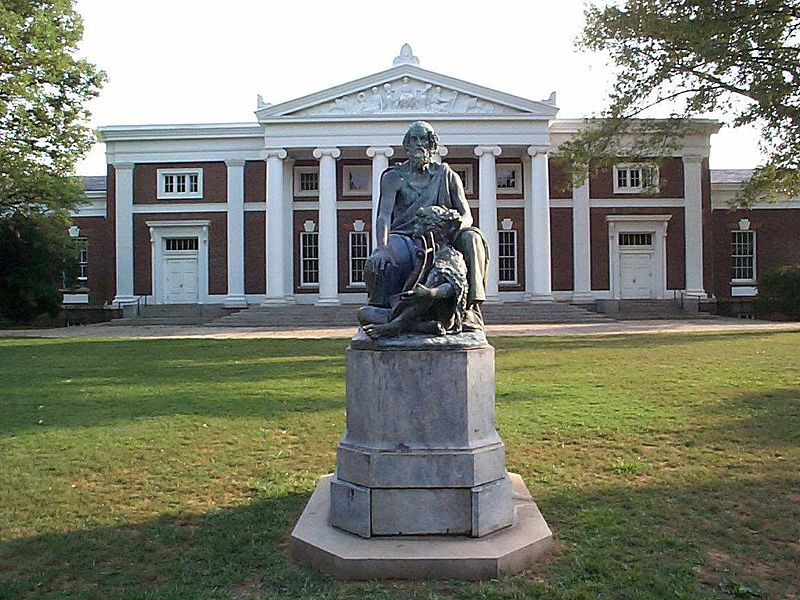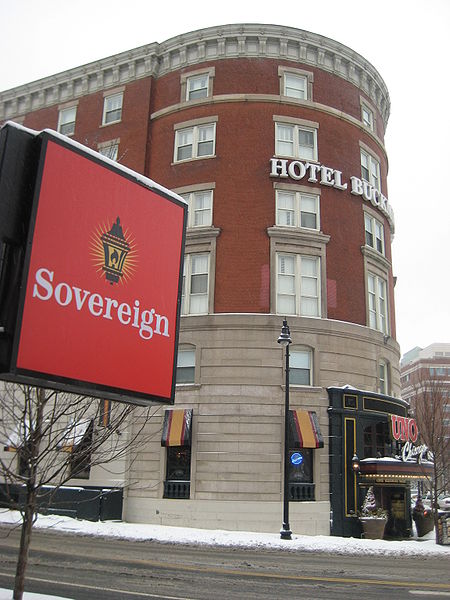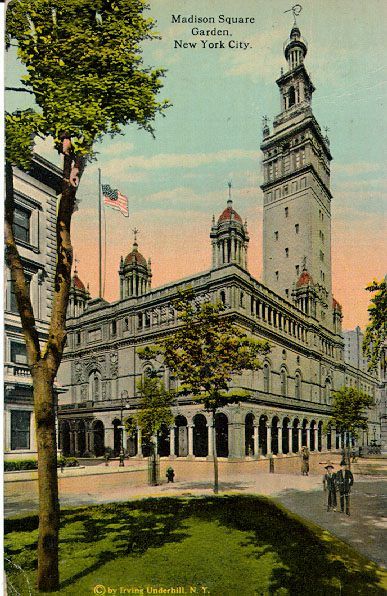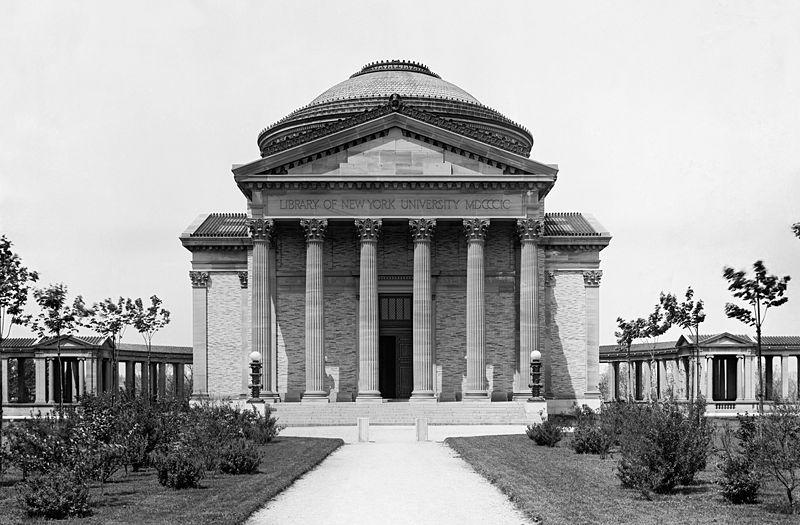<Back to Index>
- Surgeon Bernhard Rudolf Konrad von Langenbeck, 1810
- Architect Stanford White, 1853
- King of the United Kingdom Edward VII, 1841
PAGE SPONSOR
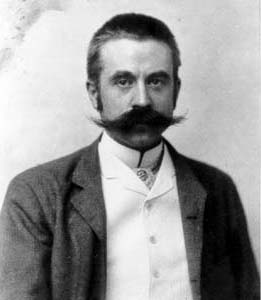
Stanford White (November 9, 1853 – June 25, 1906) was an American architect and partner in the architectural firm of McKim, Mead, and White, the frontrunner among Beaux-Arts firms. He designed a long series of houses for the rich and the very rich, and various public, institutional, and religious buildings, some of which can be found to this day in places like Sea Gate, Brooklyn. His design principles embodied the "American Renaissance".
In 1906, White was murdered by millionaire Harry Kendall Thaw over White's affair with Thaw's wife, actress Evelyn Nesbit, leading to a trial which was dubbed at the time "The Trial of the Century".
Stanford White was the son of Shakespearean scholar Richard Grant White and Alexina Black Mease (1830 – 1921). His architectural career began as the principal assistant to Henry Hobson Richardson, the greatest American architect of the day, creator of a style recognized today as "Richardsonian Romanesque". In 1878, White embarked for a year and a half in Europe, and when he returned to New York in September 1879, he joined Charles Follen McKim and William Rutherford Mead to form McKim, Mead and White.
White
designed the second
Madison Square Garden (1890;
demolished in 1925), The Cable Building — the Broadway cable car power
station (611 Broadway, 1892), Madison
Square Presbyterian Church, the New York Herald
Building (1894;
demolished), the First Bowery Savings
Bank, at the Bowery and Grand Street, 1894, Washington
Square Arch (1889), Judson Memorial
Church on
Washington Square, and the Century Club,
all in New York City.
He helped develop Tesla's Wardenclyffe
Tower (his last
design).
White designed the First Methodist Episcopal Church in Baltimore, Maryland (1887), now Lovely Lane United Methodist Church. He also designed the Cosmopolitan Building, a three-story Neo-classical Revival building topped by three small domes, in Irvington, New York, built in 1895 as the headquarters of Cosmopolitan Magazine. He built Cocke, Rouss, and Old Cabell Halls at the University of Virginia and rebuilt The Rotunda (University of Virginia) in 1898 after it burned down three years earlier (his re-creation was later reverted back to Thomas Jefferson's original design for the United States Bicentennial in 1976). He also designed the Blair Mansion at 7711 Eastern Ave. in Silver Spring Md (1880) now being used as a restaurant. He was also responsible for designing the Boston Public Library and the Boston Hotel Buckminster, both still standing today. In 1902, he designed the Benjamin Walworth Arnold House and Carriage House in Albany, New York.
McKim, Mead and White also designed the American
Academy in Rome,
which crowns the Gianicolo hill, and looks across the city to the Villa
Medici and the Borghese gardens. An imposing edifice, the American
Academy is built in the style of the Metropolitan Museum of Art, the
north and south wings of which McKim, Mead, and White designed in 1911.
In the division of projects within the firm, the social and gregarious White landed the majority of commissions for private houses. His fluent draftsmanship was highly convincing to clients who might not get much visceral understanding from a floorplan, and his intuition and facility caught the mood. White's Long Island houses have survived well, despite the loss of Harbor Hill in 1947, originally set on 688 acres (2.78 km2) in Roslyn. White's Long Island houses are of three types, depending on their locations: Gold Coast chateaux, neo-Colonial structures, especially those in the neighborhood of his own house at "Box Hill" in Smithtown, New York (White's wife was a Smith), and the South Fork houses from Southampton to Montauk Point. He also designed the Kate Annette Wetherill Estate in 1895.
Among his Newport, Rhode Island, "cottages", Rosecliff (for Mrs. Hermann Oelrichs, 1898 – 1902) adapted Mansart's Grand Trianon, but provided this house built for receptions, dinners and dances with fluent spatial planning and well contrived dramatic internal views en filade.
In his "informal" shingled cottages, there were usually double corridors for separate circulation, (illustration, right) so that a guest never bumped into a laundress with a basket of bed linens. Bedrooms were characteristically separated from hallways by a dressing room foyer lined with closets, so that an inner door and an outer door give superb privacy (still the mark of a really good hotel). White lived the same life as his clients, not quite so lavishly perhaps, and he knew how the house had to perform: like a first rate hotel, theater foyer, or a theater set with appropriate historical references. White was an apt designer, who was ready to do a cover for Scribner's Magazine or design a pedestal for his friend Augustus Saint-Gaudens' sculpture. He extended the limits of architectural services to include interior decoration, dealing in art and antiques, and even planning and designing parties. He collected paintings, pottery, and tapestries. If White could not procure the right antiques for his interiors, he would sketch neo-Georgian standing electroliers or a Renaissance library table. Outgoing and social, he possessed a large circle of friends and acquaintances, many of whom became clients. White had a major influence in the "Shingle Style" of the 1880s, on Neo-Colonial style, and the Newport cottages for which he is celebrated.
He designed and decorated Fifth Avenue mansions for the Astors, the Vanderbilts (in 1905), and other high society families. His Washington Square Arch still stands in Washington Square Park, and so do many of his clubs, which were focal points of New York society: the Century, Metropolitan, Players, Lambs, Colony and Harmonie clubs. His clubhouse for the Atlantic Yacht Club, built in 1894 overlooking Gravesend Bay, burned down in 1934. Sons of society families also resided in White's St. Anthony Hall Chapter House at Williams College (now occupied by college offices).
During the suggestive chorus song, "I Could Love a Million Girls," at the premiere performance of the musical revue Mam'zelle Champagne at the Madison Square Roof Garden (on the roof of a building that he had designed 15 years previously), White was shot point blank in the face and killed by Harry Kendall Thaw. Thaw was the jealous millionaire husband of Evelyn Nesbit, a popular actress and artist's model, with whom White had had a sexual relationship when she was 16 (to his 47). The initial reaction was one of good cheer as elaborate party tricks amongst the upper echelon of New York Society were common at the time. However, when it became apparent that White was dead, hysteria ensued. William Randolph Hearst's newspapers sensationalized the murder, and it became known as the Trial of the Century. Years later, White's son, Lawrence Grant White would write bitterly, "On the night of June 25th, 1906, while attending a performance at Madison Square Garden, Stanford White was shot from behind [by] a crazed profligate whose great wealth was used to besmirch his victim's memory during the series of notorious trials that ensued." White was buried in St. James, New York.
White
was noted for his womanizing; he had a red velvet swing installed in an
apartment where Nesbit and other girls "in varying degrees of undress"
would entertain him, which became a focal point of press coverage of
the trial. There are conflicting accounts of whether this swing was in
the "Giralda" tower at the old Madison Square Garden,
or in a nearby building on 24th Street.
